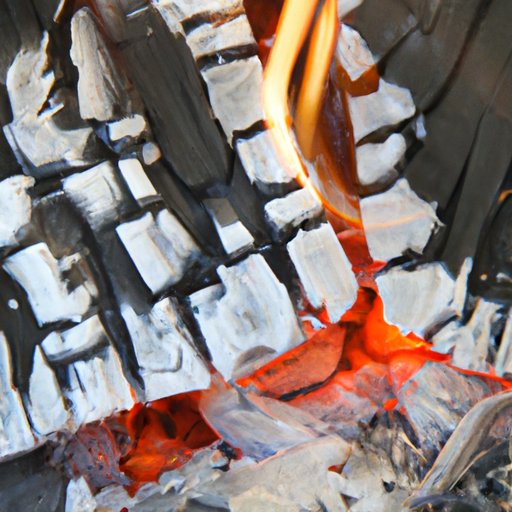
Is Burning Wood a Chemical or Physical Change?
Wood burning is a common practice used for centuries. It is a popular way of warming up homes and providing heat for cooking. But the question of whether wood burning is a chemical or physical change has remained a subject of debate among many people. Burning wood involves a series of complex processes that lead to the release of heat and light. Understanding the science behind the phenomenon is crucial in appreciating its impact on the environment, culture, and our daily lives. In this article, we explore the burning question of whether burning wood is a chemical or physical change.
Chemical Processes of Wood Burning
Wood is a complex mixture of organic materials, consisting mainly of cellulose, hemicellulose, and lignin. These components form a complex network that gives wood its mechanical strength. When wood is burned, a series of chemical reactions occur, causing physical and chemical changes to its molecular structure. Combustion requires three essential components; oxygen, heat, and fuel. Oxygen is responsible for the chemical reaction, heat serves as the activation energy required for the reaction to occur, while fuel provides the combustible material necessary for the reaction. During wood burning, oxygen reacts with the carbon and hydrogen in the wood components, leading to the release of carbon dioxide and water vapor as by-products. The heat released during the combustion process is what makes wood an excellent source of fuel for warmth and cooking.
Physical Changes During Wood Burning
Wood undergoes several physical changes during combustion. As the temperature increases, the wood loses moisture, causing it to shrink and crack. The pressure inside the wood increases, leading to the expulsion of volatile compounds such as methanol, acetone, and acetic acid. The color of the wood changes from brown to black as the chemical reactions take place. The flame produced during wood burning is a result of gas emissions produced by the release of water vapor and carbon dioxide.
Scientific Properties of Wood Combustion
Wood has several scientific properties that make it an excellent source of fuel for combustion. The amount of heat released by wood combustion depends on its chemical composition, moisture content, and density. Wood with higher density releases more energy during burning than those with lower density. The chemical composition of wood also influences how much heat is released during combustion. Hardwoods have a higher carbon content than softwoods, leading to more heat release during combustion.
Physical vs. Chemical Changes in Wood Burning
Physical and chemical changes in wood burning differ in various ways. Physical changes involve alterations in the physical properties of the wood, such as color, shape, temperature, and density. Chemical changes involve modifications in the molecular structure of the wood, leading to the production of new substances such as carbon dioxide and water vapor. In wood burning, both physical and chemical changes occur simultaneously. Understanding the difference between physical and chemical changes is vital in determining the effectiveness and efficiency of wood burning as a source of fuel.
Ecological Impact of Wood Burning
The ecological impact of wood burning is a significant concern in today’s world. Burning wood produces carbon dioxide, a potent greenhouse gas that contributes to global warming and climate change. Wood burning also contributes to air pollution, releasing toxic gases such as carbon monoxide and sulfur dioxide into the atmosphere. The impact of wood burning on the environment depends on the source of wood and how it was harvested. Sustainable forestry practices are crucial in ensuring that wood is used as a renewable resource, minimizing its impact on the environment.
Cultural Significance of Wood Burning
Wood burning has played a significant role in many cultures throughout history. In ancient times, wood was used to provide heat, light, and cooking. In some cultures, burning wood was seen as a religious act, with special significance attached to specific types of wood. Today, wood burning is still a prevalent practice, with various cultural and artistic expressions such as wood carving, woodwork, and furniture making, among others.
Comprehensive Guide to the Science Behind Wood Burning as a Heat Source
A comprehensive guide to understanding the science behind wood burning as a heat source is essential for anyone interested in using it as a fuel. Different types of wood burn at different temperatures, producing varying amounts of heat and smoke. The efficiency of wood burning depends on several factors such as the moisture content, size, and shape of the wood. Understanding the science behind wood combustion can help people make informed decisions about the best practices for sustainable and efficient wood burning.
Conclusion
Burning wood is a complex process that involves physical and chemical changes. Understanding the science behind wood burning is essential in appreciating its cultural significance, environmental impact, and practical applications. Whether wood burning is a chemical or physical change is an important question that has relevance in various fields. With this article, we hope to have provided a comprehensive guide to the science behind wood burning. For readers interested in learning more, there are many resources available that explore this topic in greater depth.




